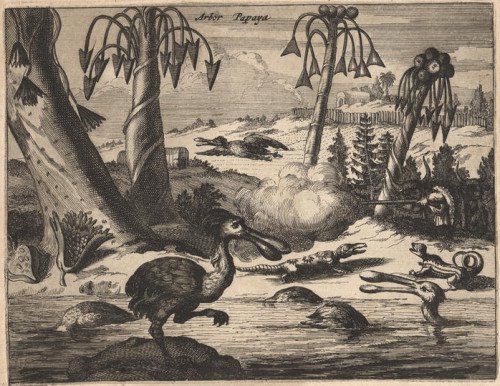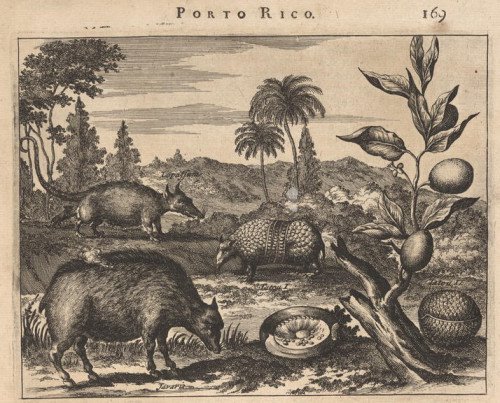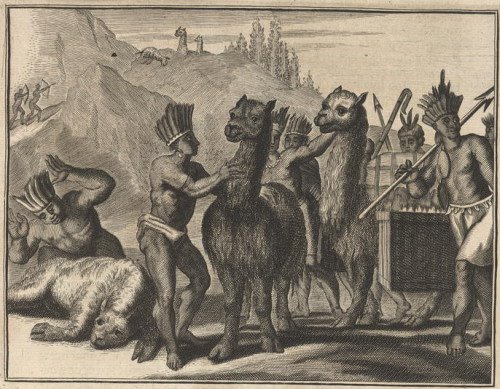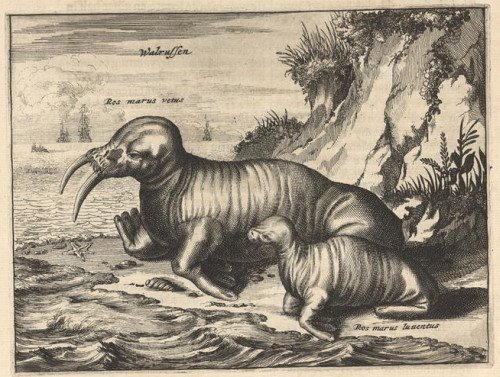
 Brazil (I wonder if these are the Tupinamba people)
Brazil (I wonder if these are the Tupinamba people) from a chapter entitled 'Cannibal Islands' if I'm guessing correctly
from a chapter entitled 'Cannibal Islands' if I'm guessing correctly(Dutch web translator sites are just appalling)

 Those critters with pups lounging on shore are marked
Those critters with pups lounging on shore are markedas 'Manati' so I presume this is in the region of Florida.
 De Nieuwe en onbekende weereld: of Beschryving van America en 't zuid-land was first published in Dutch in 1671. This large 'encyclopedic' geocartographical book about the New World was written by Arnoldus Montanus, variously described as explorer, missionary and trader but who published a number of other important works...
De Nieuwe en onbekende weereld: of Beschryving van America en 't zuid-land was first published in Dutch in 1671. This large 'encyclopedic' geocartographical book about the New World was written by Arnoldus Montanus, variously described as explorer, missionary and trader but who published a number of other important works..."Montanus wrote books on church history, theology, the history of the Netherlands, and the peoples and cultures of the New World. His widespread interests and learning were typical of the intellectual flowering of the Netherlands during the Golden Age."There are myriad engravings in the >800 website pages in which this rare book is displayed. The copperwork was done by Jacob Meurs, an engraver and publisher from Amsterdam. I may be wrong but I sense that there was more than one engraver involved. The shame is that some of the finest illustration work appears in the many very detailed maps which are double page spreads and were digitized page by page. This book contains the best maps of America in the world as at the date of publication - and includes the curious feature of depicting California as an island, an error that was propagated in a number of publications for a century - commencing in ~1625 or so.
There are a a sizeable number of illustrations of natives in various places in the Americas, purporting to record customs and culture etc. Although it made a contribution to world knowledge about tribe locations, these illustrations (well, all the book images really) are more interesting these days for their eccentricity value rather than their historical accuracy. Needless to say, a book of such exceptional quality at the time was well-received, translated and republished on numerous occasions.
- De Nieuwe en onbekende weereld: of Beschryving van America en 't zuid-land is online at the Library of Congress as part of The Atlantic World: America and the Netherlands series.
- You can buy the first edition book for only $24,000! (some information here too - 3/4 of the way down the page)
- This ebay site will give a quick view of some more images - natives - from a German edition of Montanus's book.
- I love the title page image - I 'think' it's the publication mark of Meurs (250kb).





No comments:
Post a Comment